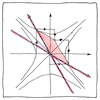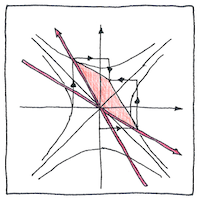Hendrik Lorentz,
Henri Poincaré
mathematics

|
Lorentz transformations
Lorentz and Poincaré answered the question why it seems, no matter whether our frame of reference is moving one way slowly or another way quickly, the laws of physics don’t seem to change. To simplify transformations from one frame of reference to another Lorentz introduced local time as a variable. For the first time, time was inextricably linked to space.
Contraction
To explain the negative result of the Michelson-Morley experiment, like George FitzGerald, Lorentz proposed that mass is contracted in the direction of movement. Lorentz believed in luminiferous aether, but Albert Einstein used his ideas of local time and length contraction for the theory of relativity.
Transformations
Your rose is red and so is mine. You say your rose is red; I say my mine is the color of blood. Your rose absorbs the same frequencies of light as mine. You say your love is like a rose. I hear you. Really. Arose, red; red, a rose.



Since my subject isn’t philosophy, the poem doesn’t ask whether our retinae and brains respond the same to the light reflected from the rose. Both Lorentz and Poincaré defended the existence of luminiferous aether; even scientists make assumptions.
See also in The book of science:
Readings in wikipedia: